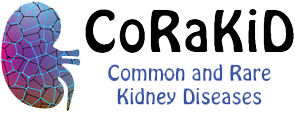Signaling through cAMP-Epac1 induces metabolic reprogramming to protect podocytes in glomerulonephritis
Résumé
Unlike classical protein kinase A, with separate catalytic and regulatory subunits, EPACs are single chain multi-domain proteins containing both catalytic and regulatory elements. The importance of cAMP-Epac-signaling as an energy provider has emerged over the last years. However, little is known about Epac1 signaling in chronic kidney disease. Here, we examined the role of Epac1 during the progression of glomerulonephritis (GN). We first observed that total genetic deletion of Epac1 in mice accelerated the progression of nephrotoxic serum (NTS)-induced GN. Next, mice with podocyte-specific conditional deletion of Epac1 were generated and showed that NTS-induced GN was exacerbated in these mice. Gene expression analysis in glomeruli at the early and late phases of GN showed that deletion of Epac1 in podocytes was associated with major alterations in mitochondrial and metabolic processes and significant dysregulation of the glycolysis pathway. In vitro, Epac1 activation in a human podocyte cell line increased mitochondrial function to cope with the extra energy demand under conditions of stress. Furthermore, Epac1-induced glycolysis and lactate production improved podocyte viability. To verify the in vivo therapeutic potential of Epac1 activation, the Epac1 selective cAMP mimetic 8-pCPT was administered in wild type mice after induction of GN. 8-pCPT alleviated the progression of GN by improving kidney function with decreased structural injury with decreased crescent formation and kidney inflammation. Importantly, 8-pCPT had no beneficial effect in mice with Epac1 deletion in podocytes. Thus, our data suggest that Epac1 activation is an essential protective mechanism in GN by reprogramming podocyte metabolism. Hence, targeting Epac1 activation could represent a potential therapeutic approach.
